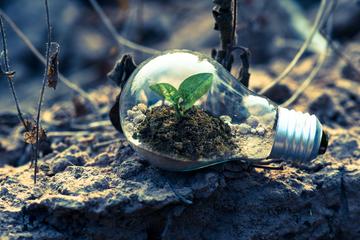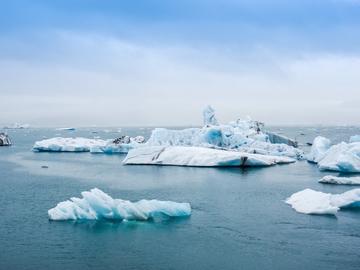Can bad news be good news? Climate change and US-Russia relations
Eva Jovanova, UC Fellow
The UC team is happy to bring you an op-ed by our Fellow Eva Jovanova, focused on Russian environmental policies, dilemmas and opportunities for cooperation.
Among the plethora of parties running for the 2021 Duma elections in Russia on September 19, two have endorsed an environmental platform. Regardless of the parties’ disputed independence from the Kremlin, the need to vote “Green” in Russia shouldn’t come as a surprise. Sincere environmental action in the country is long overdue.
Russia is one of the most affected countries in the world by climate change. The thawing of the permafrost poses a challenge to around one million Russian citizens, whose homes and cities’ infrastructure has been facing destruction, but also to industrial areas important for the country’s economy. It was the cause of the Norilsk diesel oil spill in June 2020 – one of the country’s greatest environmental catastrophes that polluted all surface water in a radius of 20 kilometers and put the Kremlin in terrible light among international environmental organizations. The clean-up was said to cost around $1.5 billion and last up to ten years. Infrastructure and the destruction of flora and fauna, however pressing to Russia’s local authorities, aren’t the only reason why the world should care about permafrost thawing.

Up to 1,600 gigatons of CO2 are held under permafrost globally, which is almost twice of the atmospheric CO2 amount. Compared to 1975, Alaska currently emits 73% more CO2 as rising temperatures have turned Arctic ecosystems into net CO2 sources. The situation in Russia’s Cherskiy region is assumedly very similar. The number of weather emergencies in 2020 was double that in 2019, as the country faced record warm temperatures since 1936 in all but two regions.
While, in the past, Putin could have shrugged off climate change as “manipulation of teenagers,” its increasingly dire consequences put pressure on him even from his friend’s circle. Vladimir Potanin, the CEO of Nornickel – the company behind the spilled fuel last year, saw his company’s profits sink by almost 40% as a result to the record $2 billion fine he paid to the state. Facing these environmental challenges alone would be a mistake on the Kremlin’s part.
While Trump’s administration has seriously damaged America’s image globally in the climate change debate, Joe Biden’s rejoining the Paris Agreement earlier this year and his serious commitments have put the US back on track. This should come as great news to the Kremlin’s climate team, but only if the Kremlin proves ready to sincerely cooperate. Yet, celebrating the “return of climate diplomacy” is premature. United Russia’s satellites posing as Green parties hijack the platform for necessary environmental agenda in the country and prevent genuine environmental movements from gaining momentum.
The latest environmental strategy by the Kremlin depends heavily on forests to absorb greenhouse gas emissions but neglects to account for the rise in forest fires. On the contrary, the strategy saw carbon emissions rise to 2.29 billion tons by 2050 with increases in almost all economic sectors apart from electricity generation and utilities. Comparably, in 2019, Russia’s carbon emissions accounted to 2.12 billion tons.
One huge difference in Russia’s attitude towards climate change has been its securitization. The newly updated Russian national security strategy mentions climate change nine times in terms of prevention and adaptation, which is a considerable change compared to 2015, when climate change was mentioned only in passing and in terms of consequences. While acknowledging the issue and committing to state action might be greeted as good news, one should be wary of optimism. In the past, the Kremlin has been eager to accuse the West of politicizing climate change as a tool that would prevent Russian development in the Arctic. Its current Arctic plan envisions numerous possibilities for international cooperation, especially on science and technology, and its realization could be a step towards stronger US-Russia cooperation.
Apart from this plan, however, Russia has been giving conflicting signs of its readiness for cooperation and its seriousness to curb emission and tackle climate change. While meetings between the US Presidential Envoy for Climate John Kerry and his Russian counterpart Ruslan Edelgeriyev are a start, they could also easily turn into PR decoys. In May, the Kremlin announced a $10 billion plan to expand its railroad infrastructure and export coal to Asia, with Russia’s Energy Ministry projecting an increase of over 40% in coal exports in their “optimistic” scenario. If this “optimistic” scenario is fulfilled, Russia’s coal export to Asia alone would be responsible for over 700 million tons of carbon emissions by 2035, most likely rendering Russia’s Paris Agreement pledge void.

Such short-term plans deter Russia from becoming the world’s hub for renewables in the long run. Russia has the largest potential capacity in the world to generate wind and solar power, but they only account to 0.2% of Russia’s electricity today, compared to US’s 12%, China’s 9.8%, and the EU’s 21.4%. Avoiding this potential, Russia not only will experience increased environmental catastrophes, but also will completely pass on the opportunity to compete in manufacturing and exporting “Green” technology – a race that China has been winning lately.
Unless the Kremlin seriously reconsiders its climate ‘adaptation’ strategy, politicizing climate challenges, and aggressive coal exports, Russia risks passing on the current US administration’s readiness to seriously cooperate on climate change issues. It also faces the risk of facing more environmental catastrophes like the Norilsk oil spill, and Putin risks seeing cronies like Potanin leave his orbit. Until the Kremlin grasps the real security challenges, Green parties in Russia and the promise of real environmental platforms will remain just a façade. Finally, overlooking renewables now would be costly in the long run, as losing the race for “Green” technology would expose Russia to paying higher costs when it finally decides to use its solar and wind potential in the future.



